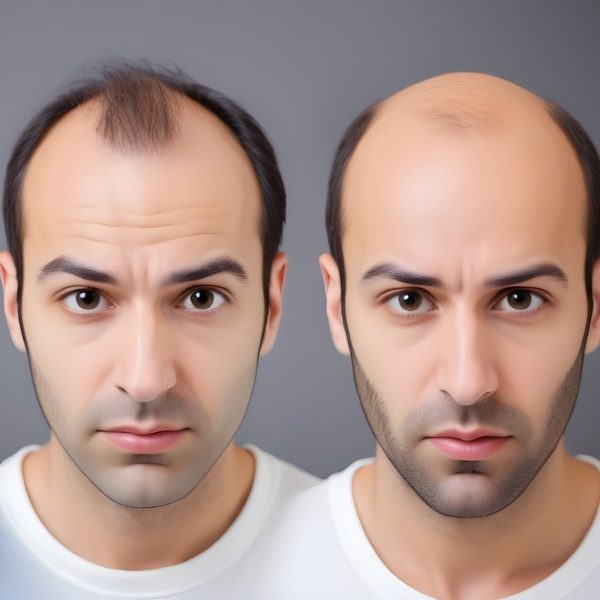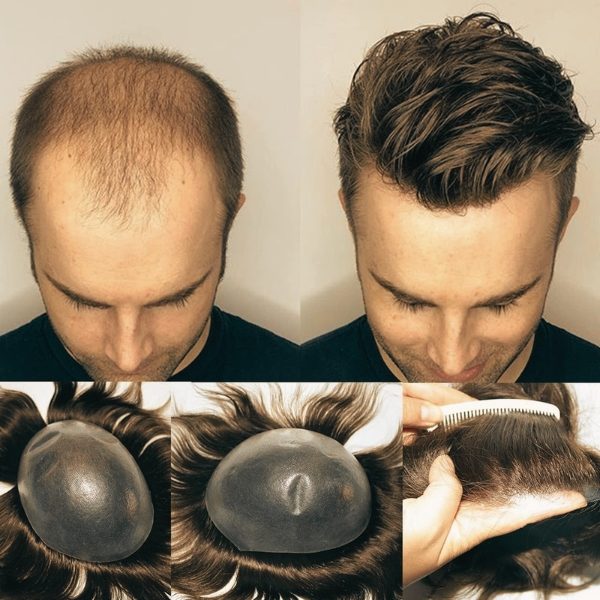
Understanding Your Options for Combating Hair Loss

Facing hair loss can be daunting, but you’re not alone. Searching for miracle regrowth solutions often disappoints, yet two solid options exist: hair transplant surgery and replacement systems. Each method offers unique benefits tailored to individual needs, making them solid choices for effective hair loss treatment. Yet, your decision ultimately hinges on personal preference and finances.
Expert Insight: Sam, a Renowned Hair Loss Solutions Specialist
Sam has more than ten years of experience in fixing hair loss problems. He knows much about surgery and non-surgery ways to get your hair back. His expertise sheds light on the intricacies of hair loss treatment, emphasizing a personalized approach to each patient’s journey.
What Is Hair Transplant Surgery and How Does Hair Transplant Work?
Hair transplant surgery takes hair from the back of your head, where it’s thick, and moves it to thin or bald spots to help with hair loss. This surgical solution involves two primary techniques that are pivotal in the hair transplant work:
In the strip method, known as Follicular Unit Transplantation (FUT), a doctor takes a piece of skin. This skin, which has hair, comes from the back of your head. They then cut this strip into smaller pieces to place in areas without hair. This method has helped many people get more hair on their heads.
Follicular Unit Extraction (FUE) is a less invasive way to move hair. In this process, doctors remove hairs from the back of your head and put them in bald spots. FUE is popular because it doesn’t leave prominent scars, and people recover faster. Many choose this method because it’s gentler than a transplant.
Both methods help grow hair in bald spots and provide a lasting solution to hair loss. But as Sam points out, “It’s important to think about future hair loss. Getting a hair transplant means you’re in for the long haul, as you might need more treatments later.” This commitment means that even though these transplants can last long, you might need to return for more if you lose hair.
What Is Hair Replacement?
Hair replacement is an easy way to get hair like yours without surgery. You can get a hairpiece matching your hair’s colour, feel, and appearance. These hair pieces are great for people who are always on the move.
You can swim, run, or go out at night and not worry about your hair. Sam says, “Nowadays, manufacturers design hair pieces for people who love to be active. You can swim, run, and play sports without any problems.”
The Basics of Hair Loss: Understanding the Underlying Causes

Hair loss can stem from various factors, including genetics and stress. Sam emphasizes, “Knowing why you’re losing hair helps you choose the right fix, whether it involves surgery or not.” Recognizing the root cause of your hair loss is essential in choosing the right treatment path.
The Impact of Thinning Hair and Bald Regions on Self-Esteem
Hair loss can significantly affect self-esteem, especially in a society celebrating lush hair. However, technological advancements in hair restoration offer hope. Whether opting for follicular unit transplants or hair replacement systems, patients often experience a significant boost in confidence and self-esteem.
Overview of Hair Replacement

What Is Hair Replacement?
Hair replacement involves using light silicon-based skin and natural human hair to create a unit that blends seamlessly with your existing hair. These systems are attached securely to the scalp and styled by professional hair stylists to ensure they’re indistinguishable from your natural hair.
Benefits of Non-Surgical Hair Replacement
Non-surgical hair replacement restores not just your hair but also your self-esteem and confidence. Sam adds, “Modern solutions can replace individual hair follicles in thinning areas, making hair replacement a highly effective and less invasive option.”
How Hair Replacement Works to Cover Bald Regions
Whether dealing with bald patches or widespread thinning, hair replacement systems can be customized to your needs, ensuring a natural and undetectable appearance.
Customizing Your Hair Replacement for Existing Hair
Tailoring your hair replacement system to match your existing hair in colour, texture, and style is critical to achieving a look that feels yours authentically. Sam’s expertise ensures that your hair replacement system perfectly complements your characteristics.
Making the Right Choice for You

Factors like lifestyle, ongoing hair loss, and financial considerations are critical in deciding between hair transplant surgery and replacement systems. Consulting with a surgeon or a hair replacement specialist like Sam can provide valuable insights into which option best suits your needs.
Conclusion: Navigating Your Hair Loss Journey with Confidence
Choosing between hair replacement and transplant surgery is a personal decision. With knowledge and expert advice, you can confidently navigate your hair loss journey, knowing that both options can restore your hair and your self-esteem and quality of life.
FAQ:
Is Hair Transplant or Hair Replacement the Superior Option?
Hair replacement with the technology used today is less expensive, does not require cutting and implanting, looks and feels like your hair, and allows you to enjoy life confidently.
What’s the Condition of a Hair Transplant a Decade Later?
A decade after a hair transplant, results can vary. If well-maintained and depending on the individual’s hair loss progression, transplanted hair can continue to grow. However, native hair may continue to thin.
What is the Durability of Hair Transplant Results?
Hair transplant results are considered permanent for the transplanted hairs. However, the overall appearance will depend on further hair loss of non-transplanted hair.
Reasons Why Hair Transplants May Not Be Valuable?
Cost, potential for uneven hair growth, ongoing hair loss requiring additional procedures, and unrealistic expectations can diminish the value of hair transplants for some individuals.
Is There Common Regret After Undergoing Hair Transplants?
Some individuals may regret the procedure due to dissatisfaction with the outcome, the cost, or the need for further treatments due to ongoing hair loss.
Who Should Not Consider Getting a Hair Transplant?
Those with insufficient donor hair in the donor area, people with certain medical conditions or scalp diseases, young individuals with unpredictable hair loss patterns, and those with unrealistic expectations may not be ideal candidates for a hair transplant.


